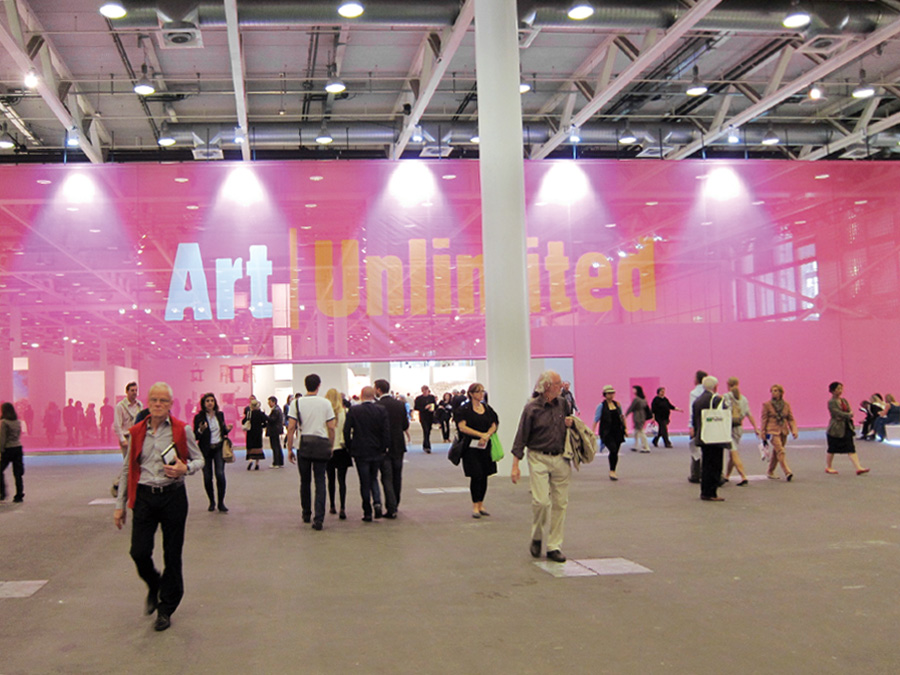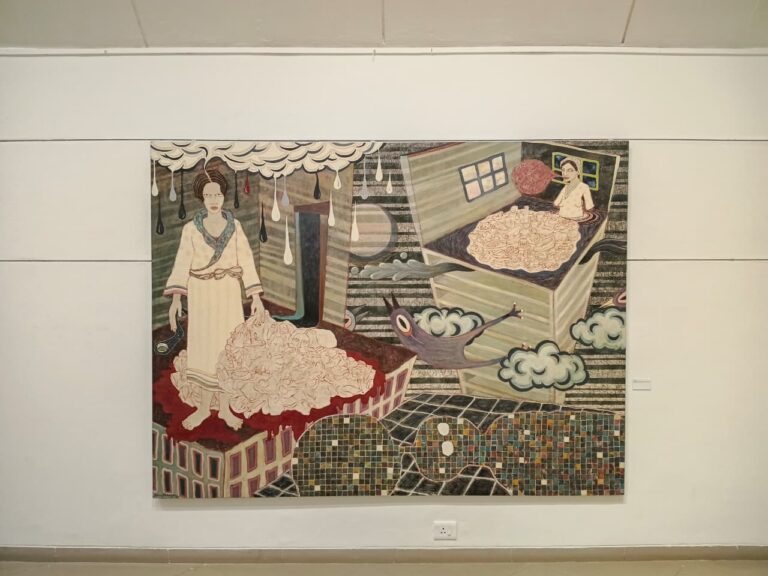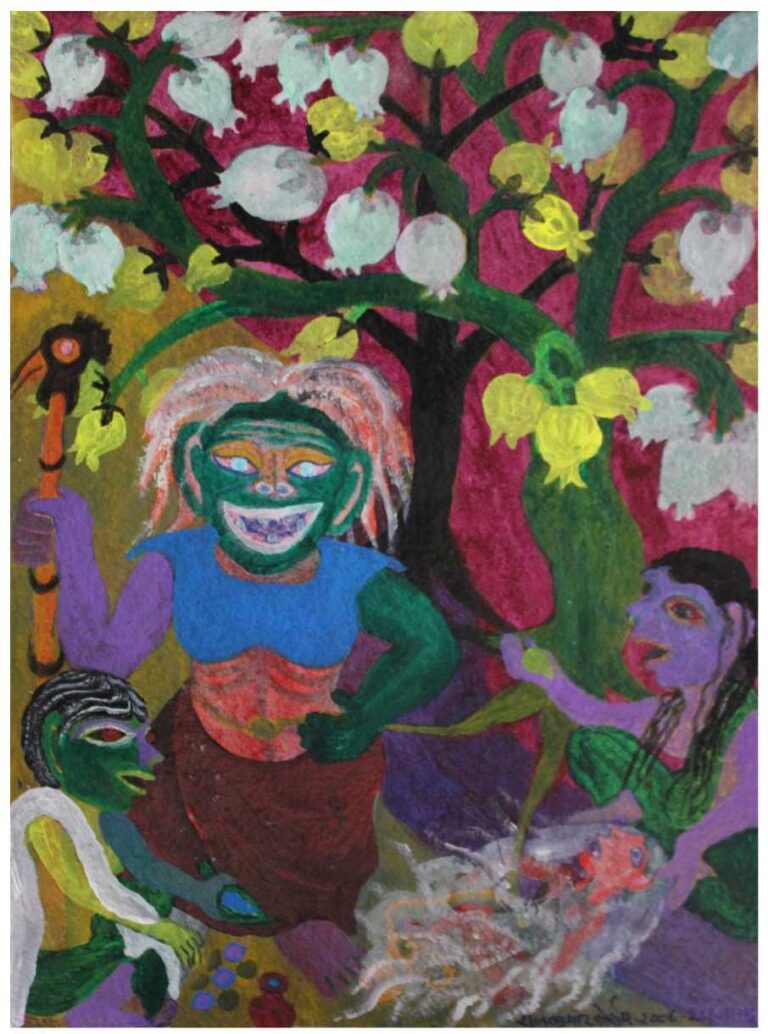What are the mysterious ways in which the art world works? It is undeniably built upon commercial transactions amongst other things and consequently the market. The circuit gives the impression that it can easily be mapped by defining networks that include dealers, galleries, auction houses, collectors and museums. Yet it is not simple. Not merely because the art world, especially in India in its current form, comprises much of non-collectable, site-specific and performance art (whose traces have found ways to even be commodified to generate revenue) but also because it is a complex system that encompasses commissioning, funding, production, labour, specialised-labour, conservation, presentation, lighting, display, travel, documentation, archiving, criticism and curation that escapes the traditional channels of commodities that can be owned traverse. The ways in which art can be marketed do not reduce itself to billboards, commercials or advertorials – the idea itself seems absurd. Auction houses, galleries and art fairs probably indicate a straightforward economy, but throw in the proliferation of biennales, foundations, residencies, and funding agencies, and the possibility that one work can simultaneously access all these spaces, we have an alphabet soup, not a sure shot formula of demand and supply. No one has yet been able to decode entirely how and why there is such a huge disparity in the sale prices of different works, sometimes even by the same artist. And then we have the black market and a thriving industry of fakes. How are market trends made and unmade? How do superstar artists ride the art world and fall off their horse? How are aesthetic value judgements trained and untrained? How is the creative genius constructed and deconstructed? Where do artists learn skills and when do they unlearn them? When does irony become malice, transgression become offensive, and humour fall flat? Questions are easy, answers are even more elusive. If skill and some commonly established aesthetic notions could weigh an artwork a few decades back, now their social, political, ethical, and cultural identity are part of what skyrockets a modest production cost to millions in the auction house. How does an artist’s value rise and fall posthumously?
While auctions have their role within the larger system, and cannot be slighted even remotely, the primary market, vis-à-vis galleries remain the unsung heroes of the art world. Building relationships with artists and collectors, nurturing them and connecting them, the primary market remains the building block. The perseverance of most dealers and galleries when braving the dark times, in seeing artists and collectors of art, through the tunnel to the light at its end, cannot be taken for granted. Encompassing huge chunks of the institution of art, and often directing an artist’s career from art school to exhibitions, art fairs, biennales, where seasoned consumers are built; the sustainable fate of the art world rests on the shoulders of the primary art market.
Most artists’ careers are made at the overlapping point of various subject positions – of critics, curators, dealers, historians, collectors, enthusiasts and media houses. And steering these subjectivities, profitably or non-profitably has become the business of art. This issue hopes to somewhat loosen this knot of various strands, and observe if there indeed is a method to the madness of the art world.
Towards this end, we have featured a series of conversations between art writers/historians and key players in the business of art to unravel the multiple levels at which the art world functions. The intent as usual with TAKE, hasn’t been to develop a formula or push for singular understandings, but to let discourses evolve, intact with their contradictions and multiple vantage points. Kicking off the issue, we have Dr. Amin Jaffer in conversation with Bharti Lalwani, taking us through a personal journey with antiques through his experiences working with the Victoria & Albert Museum and Christie’s as well as his preference for pieces that have cross-cultural influences. Here we have the advantage of his insight as someone who has worked for both a public institution and an auction house, both distinct validators of value and aesthetics from their own authority. Anders Petterson is quite the authority on the market in India, and Shivani Chandra and I pick his brains on the rise and fall of prices, the general economic climate, and the boom and bust and boom again of the market for Indian art. Mayank Mansingh Kaul has been able to extract for us the workings of a foundation, and philanthropy in the arts through his conversation with the exquisite Feroze Gujral in a rare, exclusive interview. TAKE is proud that Feroze chose the platform of the magazine to showcase insights into the forthcoming initiatives of the Gujral Foundation.

If any one platform has single-handedly built interest and market equally in the arts, it has been Neha Kirpal through the India Art Fair (formerly India Art Summit). Sophia Powers chats with her on how she has managed to build a fair at a time when all the odds were against her, how they have consistently grown and challenged themselves with every edition and their plans for the future. The fabulous Fatima Mahdi Karan interviews Dinesh Vazirani, a pioneer in his own right with Saffronart, the leading auction house for Indian art internationally that has been locally grown. He talks about his various ventures and strategies through its online platform (the most recent being an app) that has managed to allow the institution to push itself, and keep things interesting and dynamic. Deepanjana Klein, Senior Specialist at Christie’s takes us through the ABCs of the Indian art market – a much needed addition to this issue, which would have otherwise assumed an already informed readership. Christie’s has managed several headlines in India over the last year with their India Auctions. Priya Pall engages the head of the team that made it all happen with record breaking bids, William Robinson. He talks about the legendary sale of the VS Gaitonde last year, the most recent Christie’s auction and large figures that have been a source of hope for the local market. Though antiquities weren’t part of the early 2000s boom in the Indian art market, they have built a sustained market over the years. Deepak Natesan allows us the benefit of his elaborate experience in the field in his conversation with Gopal Mirchandani. Our regular series of reviews and reports this time cover especially key events, most specifically the Asia Triennial Manchester (for which TAKE was a media partner), the second edition of the Kochi-Muziris Biennale, Amin Jaffer’s curated show of South Asian art in New York City, the exhibition that has set new standards for art viewership in New Delhi, ‘Asamayavali/The Untimely Calender’ – Raqs Media Collective’s retrospective at the National Gallery of Modern Art, and pages from Diana Campbell’s diary on the Dhaka Art Summit that give us an intimate account, right from the horse’s mouth. A large part of the Indian art community has been aghast at the recent efforts of the Faculty of Fine Arts, MSU, Baroda, towards VadFest 2015. The Phantom Lady sweeps through the scene to give us her thoughts on it. As always, Manisha Gera Baswani is the fly on the wall, this time at the Kochi-Muziris Biennale, wrapping up a short but delightfully crisp issue of TAKE on India.
Which brings us to the recent name-change that has added a fresh twist in the history of TAKE. From this issue onwards we re-introduce ourselves as TAKE on India, a biannual journal bringing fresh perspectives on art from the sub-continent and around the world like we usually do. This should give all of us at TAKE a bigger dose of enthusiasm, and new challenges to overcome. This comes right on time for the India Art Fair and the bustle of excitement that hits the city every year with it. We would be hosting the inaugural party for the fair once again as a media partner. The fair merry would be the ideal finale as temperatures break from what has been a rather blissfully cold winter.
See you all soon, with the next issue of TAKE on India.
Happy New Year!
Bhavna Kakar
January, 2015














